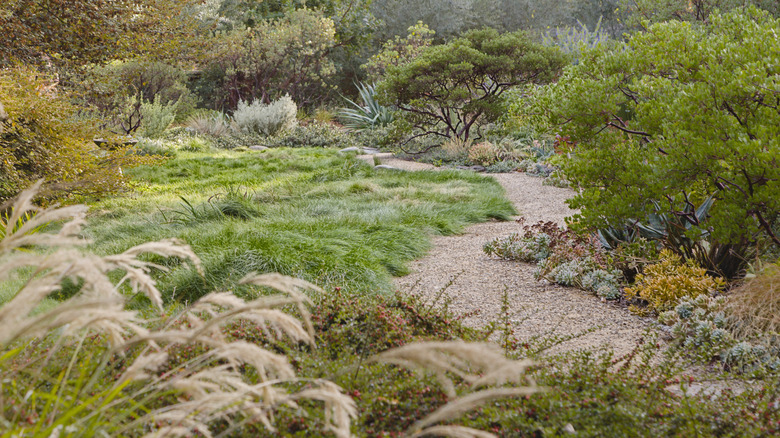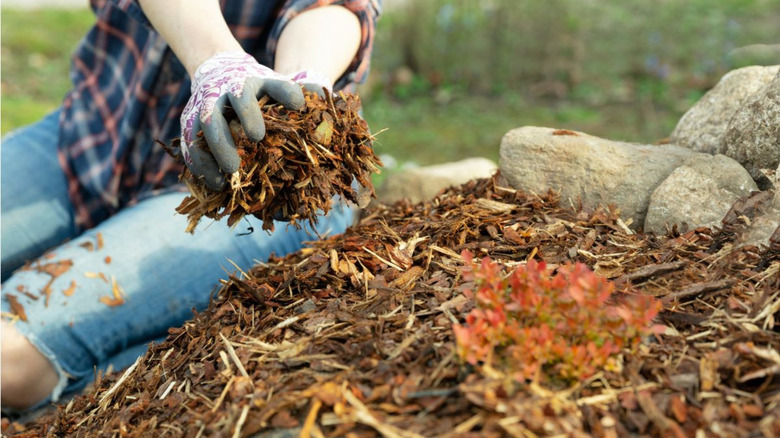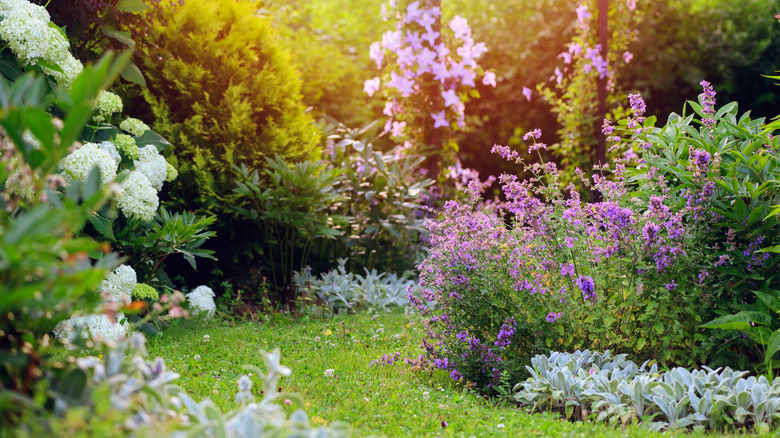Why Gravel May Ruin Your Sustainable Garden (And Better Options To Consider)
If there's one thing every gardener knows, it's that soil health is key to big blooms and a bountiful harvest. It is literally the foundation on which your beautiful garden is built, so it is critical that every decision you make in the garden takes into consideration the impact on the soil.
Still, gardeners can sometimes unintentionally compromise the health of their soil in the pursuit of aesthetics. For instance, gravel may make an attractive garden path — or weed barrier — but it does nothing for your soil and can often make it worse by depriving it of nutrients, as it does not break down over time.
If your goal is to build healthy, resilient soil that allows you to use more sustainable practices in your yard, then you should think twice about laying down gravel, no matter how you plan to use it. Luckily, there are many alternatives to gravel that are more eco-friendly and enhance your mission to build a healthy, sustainable garden ecosystem.
Wood can be an alternative to gravel in the garden
Of course, many factors go into determining a product's sustainability, which means there are many things to consider when choosing the right material for your needs. Natural materials, like wood bark or other plant-based mulch, make a good alternative to gravel and have benefits beyond weed suppression — they also break down over time, feeding the soil. You will need to reapply wood mulch annually, making it an expensive solution — and maybe pick a stray weed here or there — but its benefits to the soil make the extra effort worth it.
For a longer-term solution, recycled wood sleepers or even logs can make for eco-friendly options for the perfect DIY garden path. Whether you chop up logs into stepping-stone-sized rounds to lay out a path, or you use sleepers to build a path reminiscent of a boardwalk, natural wood makes for a great option. You can even combine these options with the ground cover of your choice if you would like to mix and match sustainable alternatives to gravel.
Ground cover makes a sustainable weed barrier
Whether you are looking for materials to use as a path or a weed barrier in your garden beds, a ground cover is a good alternative to gravel, and you always have the option of working in flagstones (bonus points for finding recycled or second-hand options) to provide a more structured look. Using a ground cover that can handle heavy foot traffic, such as Dutch white clover (Trifolium repens), can be a good option. The roots help prevent erosion, and clover is a nitrogen fixer, which helps build soil health, reducing the need for fertilizer. In some locations, however, Dutch white clover may become invasive, so be sure to do your homework first.
You may also consider a plant like creeping thyme (Thymus serpyllum), which comes in a variety of options and spreads. As with any plant, you will need to consider the site conditions and the needs of the adjacent plants, but there are a wide variety of ground covers to choose from. And if you pick the right one, you can even use ground covers to deter pests, which gets them more points on the sustainability scale.


